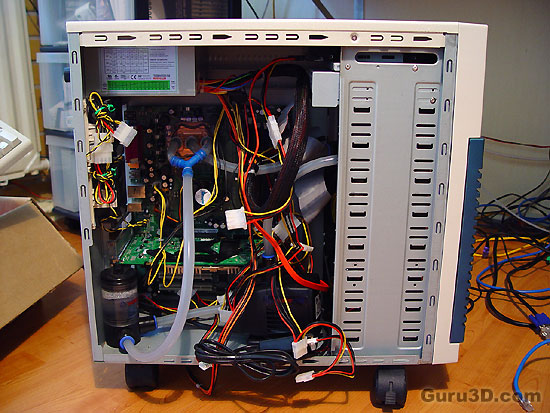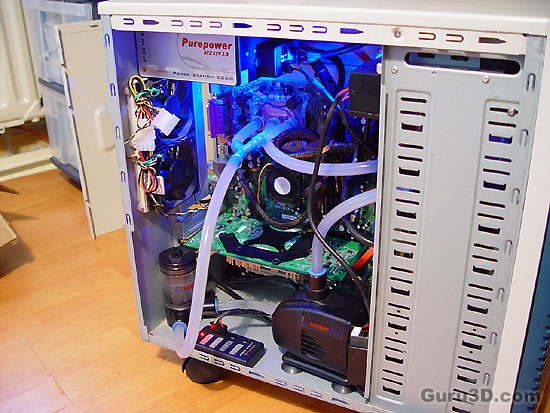Page 2
I've got the power ...
You know, it's amazing what a PC consumes power wise these days. Manufacturers really need to take a good look at this problem as it is a growing concern. Take a Pentium 4 3.6 GHz Prescott based PC armed with the now mid-range Radeon x800 XT PE, three HDs, a DVD-writer and CD Writer. When windows boots it'll use up no more than like 120-130 Watts.
The minute you overclock your processor and graphics card, and use the HDs and optical drives, your wattage will rise to about 350-400 Watts and can, at very stressful points, peak even higher. That still leaves plenty of room to play around. However, for every additional HD or optical drive you need to add 10 Watts and that's where the problem nowadays is.
Do you choose the Guru path of
SLI or Crossfire ? Add another 75-100 Watts to the margin we just set. Do you have a dual CPU based rig or Dual Core processor ? That'll cost you about an extra 80 Watts and then there is additional cooling to ventilate all these "hot" gadgets. Therefore always choose a PSU with plenty of 'breathing' space for future upgrades and devices.At this time I suggest you get at least a 400 Watt PSU for any mediocre PC. With a lot of HD's and extras like active fans and case-mods such as lights, or if simply powering a high-end gaming rig, go for something even higher than 400 Watt. A 520 Watt PSU today is not that bad of a specification for today's high-end computers.
See, my point is this, we need a good PSU these days, and in the near future probably diesel backed up generators in our gardens :)
Right, let's have a peek at the PurePower distribution voltage rails:
|
OUTPUT |
INPUT | |||||||
V(p-p)
What seems a little odd are the two 12volts rails, I mean it's fantastic that there are two of them if you decide to do some SLI/Crossfire gaming yet they are 15 Amps each. A single GeForce 7800 GTX graphics card can peak towards 20-22 AMPs. DUAL in SLI NVIDIA recommends 30 Amps in total on the 12 volts rail. You need to keep in mind that you have 2x15 AMPs available, thus 30 AMPS. To put this to the test we are going to hook up two 7800 GTX cards in SLI in a test rig to see if this PSU can keep up with it.
Power Factor Correction - PFC
The PurePower PSU we tested was model W0073, I mention this specifically as this model has a very nice feature called active PFC. To put it in simple terms, Active PFC PSUs are more expensive and from a power consumption point of view more efficient. Power Factor Correction (PFC) allows power distribution to operate at its highest efficiency.
There are two types of PFC, Active PFC and Passive PFC. This PSU has active PFC. Active PFC uses a circuit to correct power factor, Active PFC is able to generate a theoretical power factor of over 95%. Active Power Factor Correction also markedly diminishes total harmonics, automatically corrects for AC input voltage, and is capable of a full range of input voltage. Since Active PFC is the more complex method of Power Factor Correction, it is definitely more expensive to produce an active PFC power supply.
Right, allow me to commence with both the beginning and the end results straight away. Ladies and gentlemen .. it's time to start the "Extreme Makeover" ...

Before: this is "Julia" 14 months of age ... and ugly ... gosh.

After: we did a 130 USD plastic surgery this is the end result. Now that already speaks for itself doesn't it ? Notice how little wiring comes out of the PSU. One cable leads towards the 5.25" drive bay distribution box, and all the way down at the bottom you can see the mini distribution box (mini-PST)
